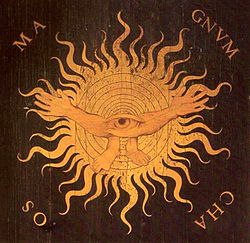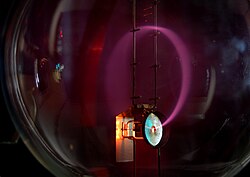Portal:Radiation astronomy/Laboratory
Astronomical analysis laboratory

This laboratory is an activity for you to analyze an astronomical situation. While it is part of the astronomy course principles of radiation astronomy, it is also independent.
Astronomical analysis is the detailed examination of the elements or structure of some astronomical thing (an entity, source, or object), typically as a basis for discussion or interpretation.
Once an astronomical situation has been selected, it must be separated into its constituent elements, for example, the identification and measurement of the chemical constituents of a substance or specimen.
You may choose an astronomical situation to dissect.
I will provide one example of this process. Please put any questions you may have, and your laboratory results, you'd like evaluated, on the laboratory's discussion page.
Enjoy learning by doing!
Cosmogony laboratory

This laboratory is an activity for you to create a universe. While it is part of the astronomy course principles of radiation astronomy, it is also independent.
Some suggested primordial entities to consider are electromagnetic radiation, neutrinos, mass, time, Euclidean space, Non-Euclidean space, dark matter, dark energy, purple phantoms, and spacetime.
More importantly, there are your primordial entities.
And, yes, you can create a universe from a peanut butter and jelly sandwich if you wish to.
You may choose to define your primordial entities or not.
Usually, research follows someone else's ideas of how to do something. But, in this laboratory you can create these too.
This is an astronomy cosmogony laboratory, but you may create what an astronomy, a cosmogony, or a laboratory is.
Yes, this laboratory is structured. And, you are providing it. Or, not, an unstructured universe is okay too.
I will provide an example of a cosmogony. The rest is up to you.
Questions, if any, are best placed on the discussion page. Please put your laboratory results, you'd like evaluated, on the laboratory's discussion page.
Cratering astronomy laboratory
This laboratory is an activity for you to create or analyze a cratering. While it is part of the astronomy course principles of radiation astronomy, it is also independent.
Some suggested types of cratering to consider include a lightning strike, a bullet shot into some material, a water droplet hitting the surface of a beaker of water, a subterranean explosion, a sand vortex, or a meteorite impact.
More importantly, there is your cratering idea. And, yes, you can crater a peanut butter and jelly sandwich if you wish to.
Okay, this is an astronomy cratering laboratory, but you may create what a crater is. Another example is a volcanic crater.
I will provide an example of a cratering experiment. The rest is up to you.
Please put any questions you may have, and your laboratory results, you'd like evaluated, on the laboratory's discussion page.
Enjoy learning by doing!
Electric orbits

This laboratory is an activity for you to calculate an electric or magnetic orbit of an astronomical object. While it is part of the astronomy course principles of radiation astronomy, it is also independent.
Some suggested entities to consider are electric fields, magnetic fields, mass, charge, Euclidean space, Non-Euclidean space, or spacetime.
Okay, this is an astronomy orbits laboratory, specifically to try out electric/magnetic orbits and where possible compare them to those calculated using gravity.
Yes, this laboratory is structured.
I will provide an example of an electric/magnetic orbit. The rest is up to you.
Please put any questions you may have, and your laboratory results, you'd like evaluated, on the laboratory's discussion page.
Enjoy learning by doing!
Electron beam heating laboratory
This laboratory is an activity for you to create a method of heating the solar corona or that of a star of your choice. While it is part of the astronomy course principles of radiation astronomy, it is also independent.
Some suggested entities to consider are electromagnetic radiation, electrons, positrons, neutrinos, gravity, time, Euclidean space, Non-Euclidean space, magnetic reconnection, or spacetime.
More importantly, there are your entities.
Please define your entities or use available definitions.
Usually, research follows someone else's ideas of how to do something. But, in this laboratory you can create these too.
Okay, this is an astronomy coronal heating laboratory.
Yes, this laboratory is structured.
I will provide an example of electron beam heating calculations. The rest is up to you.
Please put any questions you may have, and your laboratory results, you'd like evaluated, on the laboratory's discussion page.
Enjoy learning by doing!
Stars/Galaxies/Laboratory

This laboratory is an activity for you to create or define a galaxy. While it is part of the astronomy course principles of radiation astronomy, it is also independent.
Some suggested galaxy entities to consider are the early Hubble classification, electromagnetic radiation, neutrinos, mass, time, Euclidean space, Non-Euclidean space, and spacetime.
More importantly, there are your galaxy delineating entities.
You may choose to define your galaxy entities or use those already available.
Usually, research follows someone else's ideas of how to do something. But, in this laboratory you can create these too.
Okay, this is an astronomy, galaxies, laboratory, but you may decide what an astronomy, a galaxy, or a laboratory is, its appropriateness, and applicability.
Yes, this laboratory is structured.
I will provide an example of a possible galaxy and analyze it. The rest is up to you.
Please put any questions you may have, and your laboratory results, you'd like evaluated, on the laboratory's discussion page.
Enjoy learning by doing!
Portal:Radiation astronomy/Laboratory/7
Portal:Radiation astronomy/Laboratory/8
Portal:Radiation astronomy/Laboratory/9
Portal:Radiation astronomy/Laboratory/10
Portal:Radiation astronomy/Laboratory/11
Portal:Radiation astronomy/Laboratory/12
Portal:Radiation astronomy/Laboratory/13
Portal:Radiation astronomy/Laboratory/14
Portal:Radiation astronomy/Laboratory/15
Portal:Radiation astronomy/Laboratory/16
Portal:Radiation astronomy/Laboratory/17
Portal:Radiation astronomy/Laboratory/18
Portal:Radiation astronomy/Laboratory/19
Portal:Radiation astronomy/Laboratory/20
Portal:Radiation astronomy/Laboratory/21
Portal:Radiation astronomy/Laboratory/22
Portal:Radiation astronomy/Laboratory/23
Portal:Radiation astronomy/Laboratory/24
Portal:Radiation astronomy/Laboratory/25
Portal:Radiation astronomy/Laboratory/26
Portal:Radiation astronomy/Laboratory/27
Portal:Radiation astronomy/Laboratory/28
Portal:Radiation astronomy/Laboratory/29
Portal:Radiation astronomy/Laboratory/30
Portal:Radiation astronomy/Laboratory/31
Portal:Radiation astronomy/Laboratory/32
Portal:Radiation astronomy/Laboratory/33
Portal:Radiation astronomy/Laboratory/34
Portal:Radiation astronomy/Laboratory/35
Portal:Radiation astronomy/Laboratory/36
Portal:Radiation astronomy/Laboratory/37
Portal:Radiation astronomy/Laboratory/38
Portal:Radiation astronomy/Laboratory/39
Portal:Radiation astronomy/Laboratory/40
Portal:Radiation astronomy/Laboratory/41
Portal:Radiation astronomy/Laboratory/42
Portal:Radiation astronomy/Laboratory/43
Portal:Radiation astronomy/Laboratory/44
Portal:Radiation astronomy/Laboratory/45
Portal:Radiation astronomy/Laboratory/46
Portal:Radiation astronomy/Laboratory/47
Portal:Radiation astronomy/Laboratory/48
Portal:Radiation astronomy/Laboratory/49
Portal:Radiation astronomy/Laboratory/50
Nominating or creating laboratories
If you have a suggestion for future Selected laboratories for this portal, please suggest them on the discussion page, or create them yourself. You can also suggest future Selected laboratories at Portal talk:Radiation astronomy/Laboratory. If you have any questions, contact User:Marshallsumter or leave a message at Portal Astronomy.